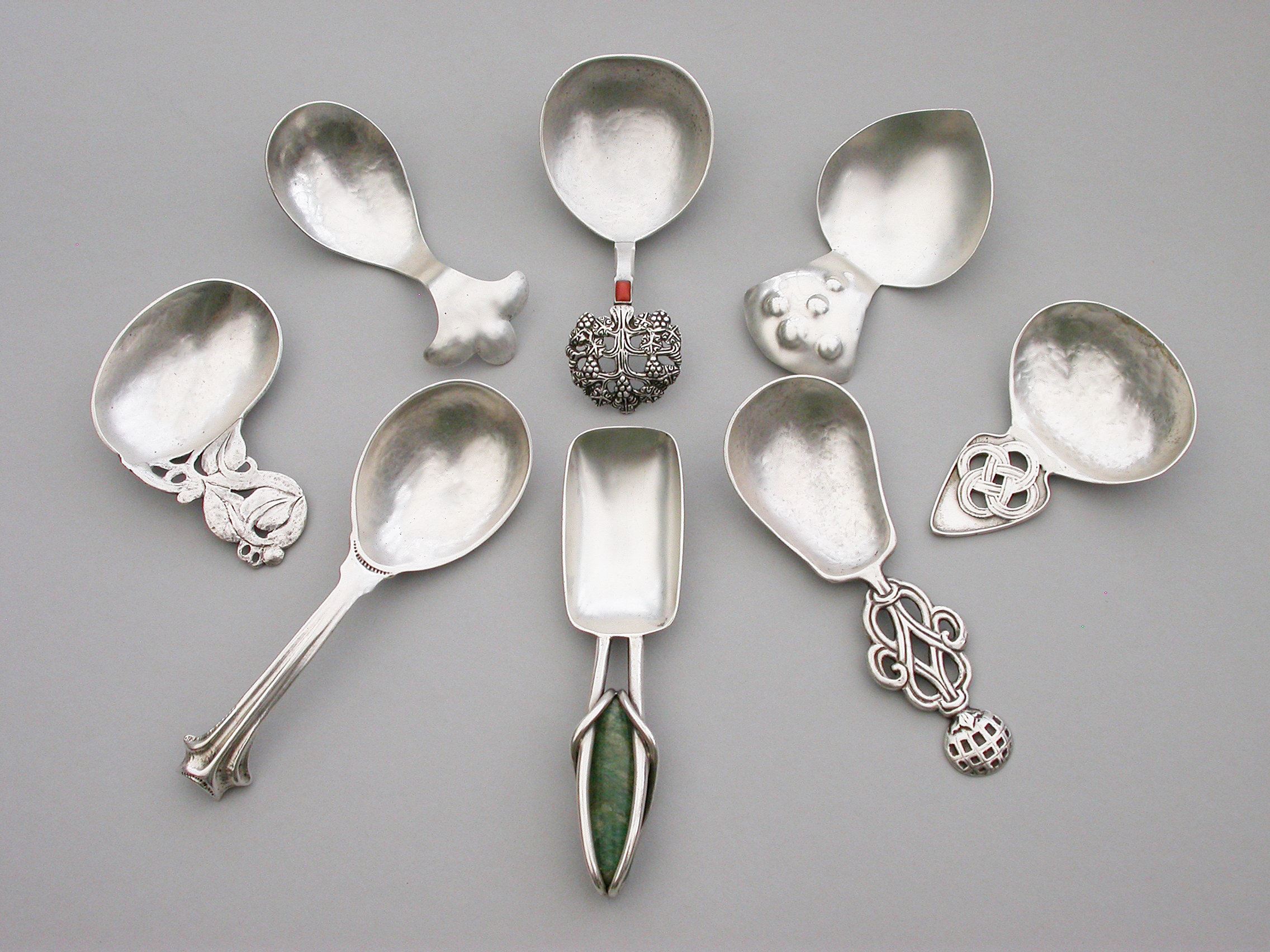
At the beginning of the 20th century, two movements emerged that were to influence design in a wide range of artistic fields, including metalwork and the silver Tea Caddy Spoon. These styles: 'Art Nouveau' and 'Arts & Crafts' are not easy to define. They were two distinct but often complimentary trends which overlapped in time and between which there was some exchange of ideas and influence.
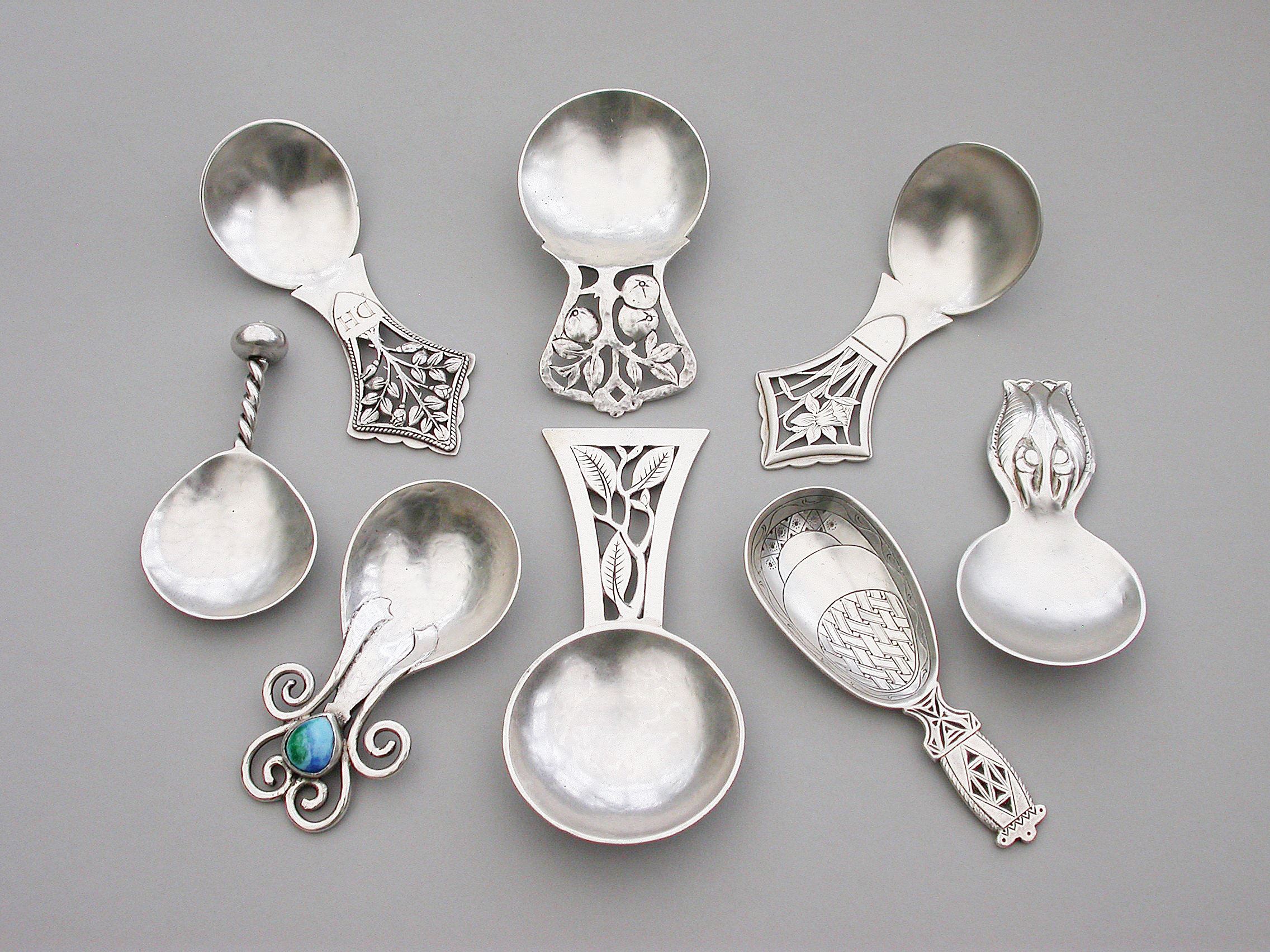
Art Nouveau appears to be a natural progression from the late nineteenth century preoccupation with the Orient and Japonaiserie. It can be identified from the 1890's until the beginning of the First World War in the fine arts of Britain, Europe and America.
There was a conscious effort to produce a new art to herald a new century. The Art Nouveau Movement was concerned essentially with a new decorative style (sensuous flowing and twisting lines, natural forms, whiplash ornament and sinuous curves) which influenced designs in architecture, furniture, painting, interior decor, sculpture, jewellery etc.
The Arts & Crafts Movement had earlier roots and was of a more lasting duration as a style. It was a blend of artistic, social and moral reform, which arose as a reaction against the Industrial Revolution with its associated dreadful living and working conditions. In England it was William Morris (1834-1869) whose Socialist principles influenced his formulation of the ideas for the Arts & Crafts Movement, supporting a revival in individual craftsmanship (as did John Ruskin before him). The craftsmanship was more important than the value of the metal and gems used; much work was in base metals as well as in silver which was usually hammered. Semi-precious stones were generally uncut or cabochon. Some of the designs were characterised by a strong influence in Celtic Art.
The ideas led to the founding of many guilds in the 1880's of which C.R.Ashbee's Guild of Handicrafts is a well-known example. Others soon followed including the Keswick Schoool of Industrial Art and Edward Spencer's Artificer's Guild, who were responsible for the fine
'Vine Tree of Life' spoon set with a coral cabochon on the handle and the
pierced spoon with the 'mesh golf ball' finial shown here:-
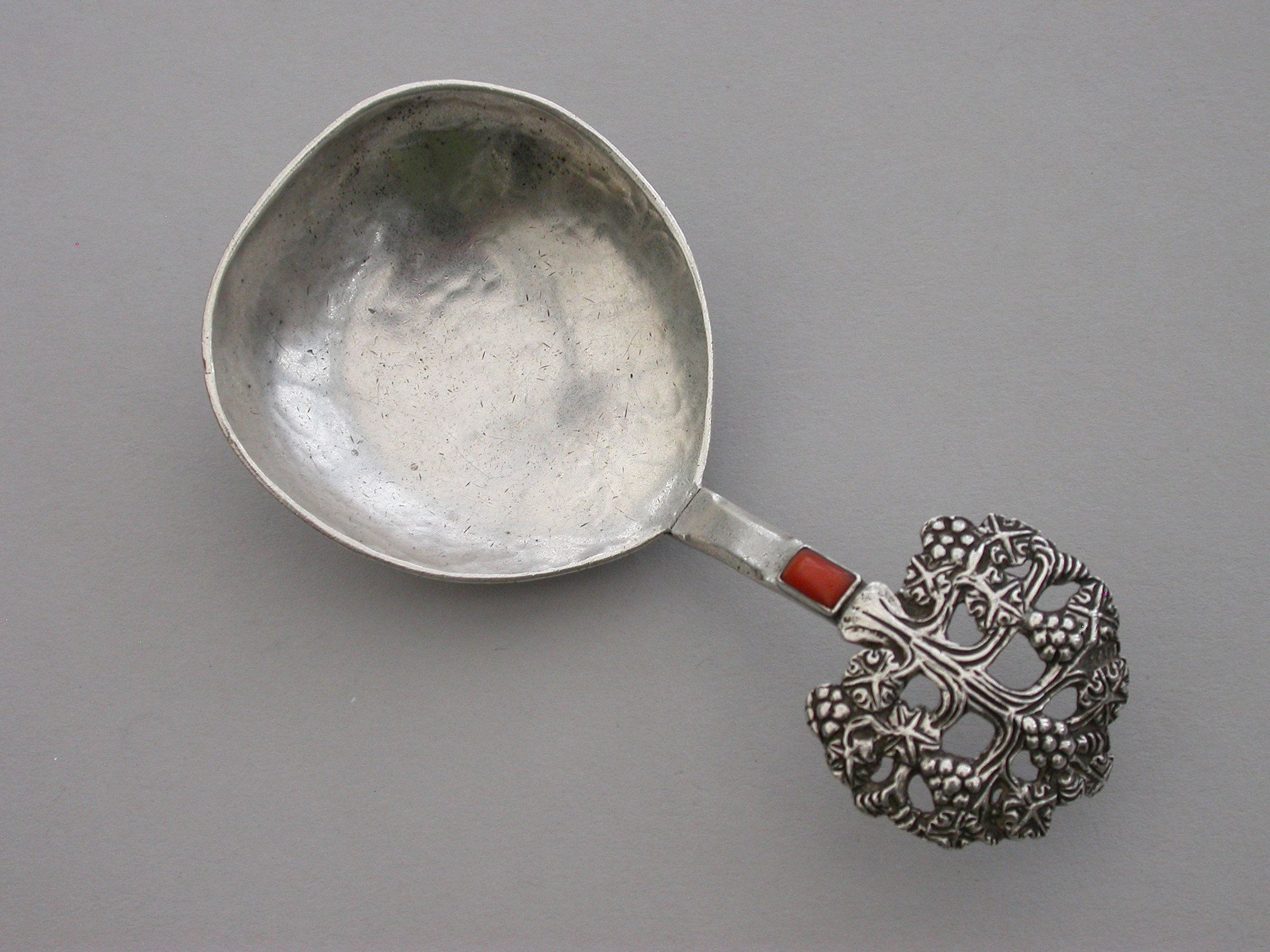
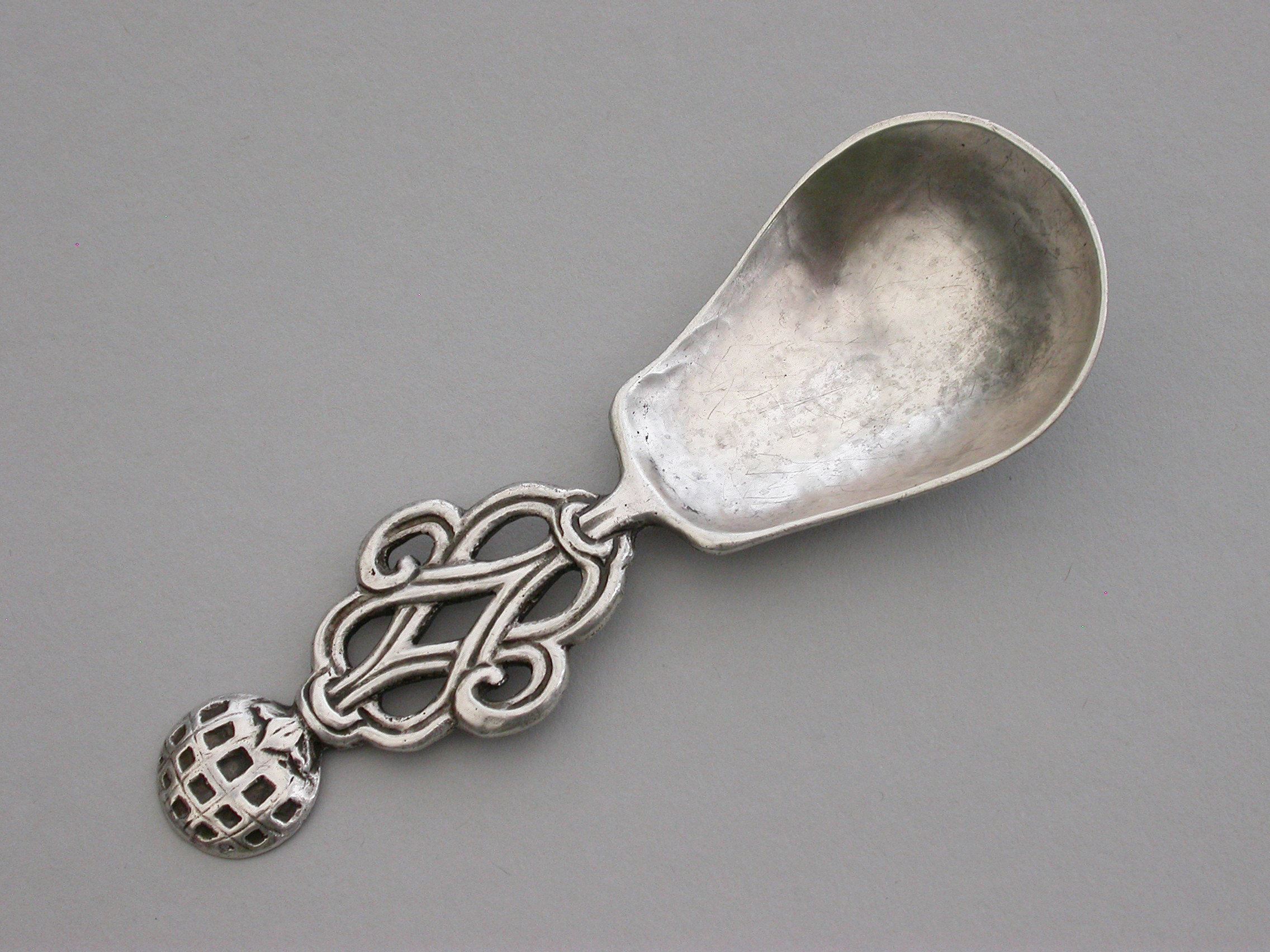
Liberty & Co had a profound influence on early design. They employed designers like Archibald Knox who helped them to maintain their pre-eminence. They often used the trade name of 'Cymric' for silver and 'Tudric' for pewter. Knox was responsible for designing this exceptional
Greenstone (Connemara marble) handled Caddy Spoon for Liberty & Co's Cymric range in 1904. It appears in the Liberty sketch book - design number 500/83.
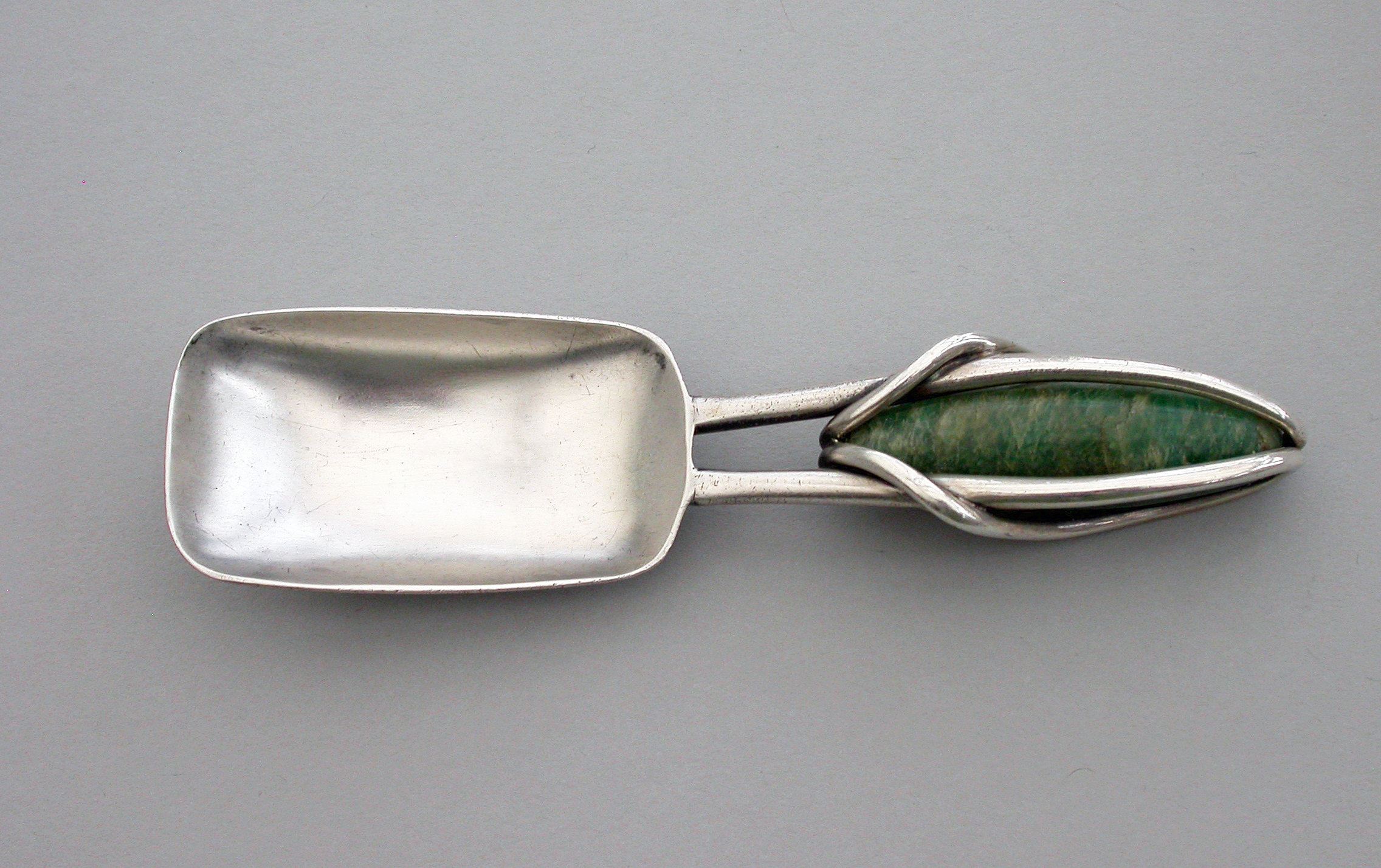
Omar Ramsden and his partner Alwyn Carr met at evening classes at the Sheffield School of Art and registered their first mark in 1898. Their partnership lasted until 1919. The fine quality heavy hammered silver Caddy Spoons are quite distinctive, often inset with semi-precious stones or enamel bosses like the example shown
here. The plainer heavy cast Spoon with
Onslow type terminal, by Omar on his own c1927, is quite unusual.
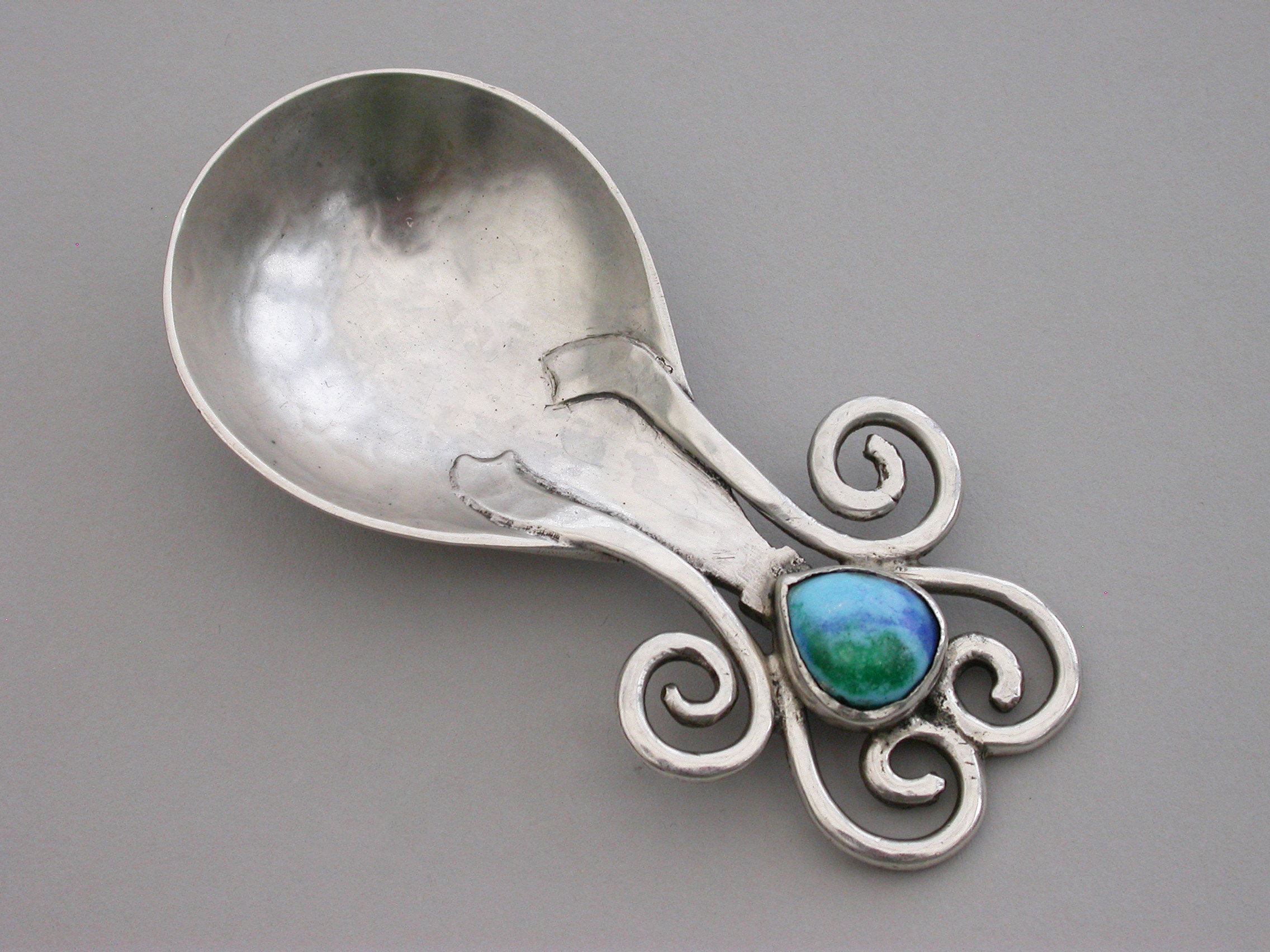
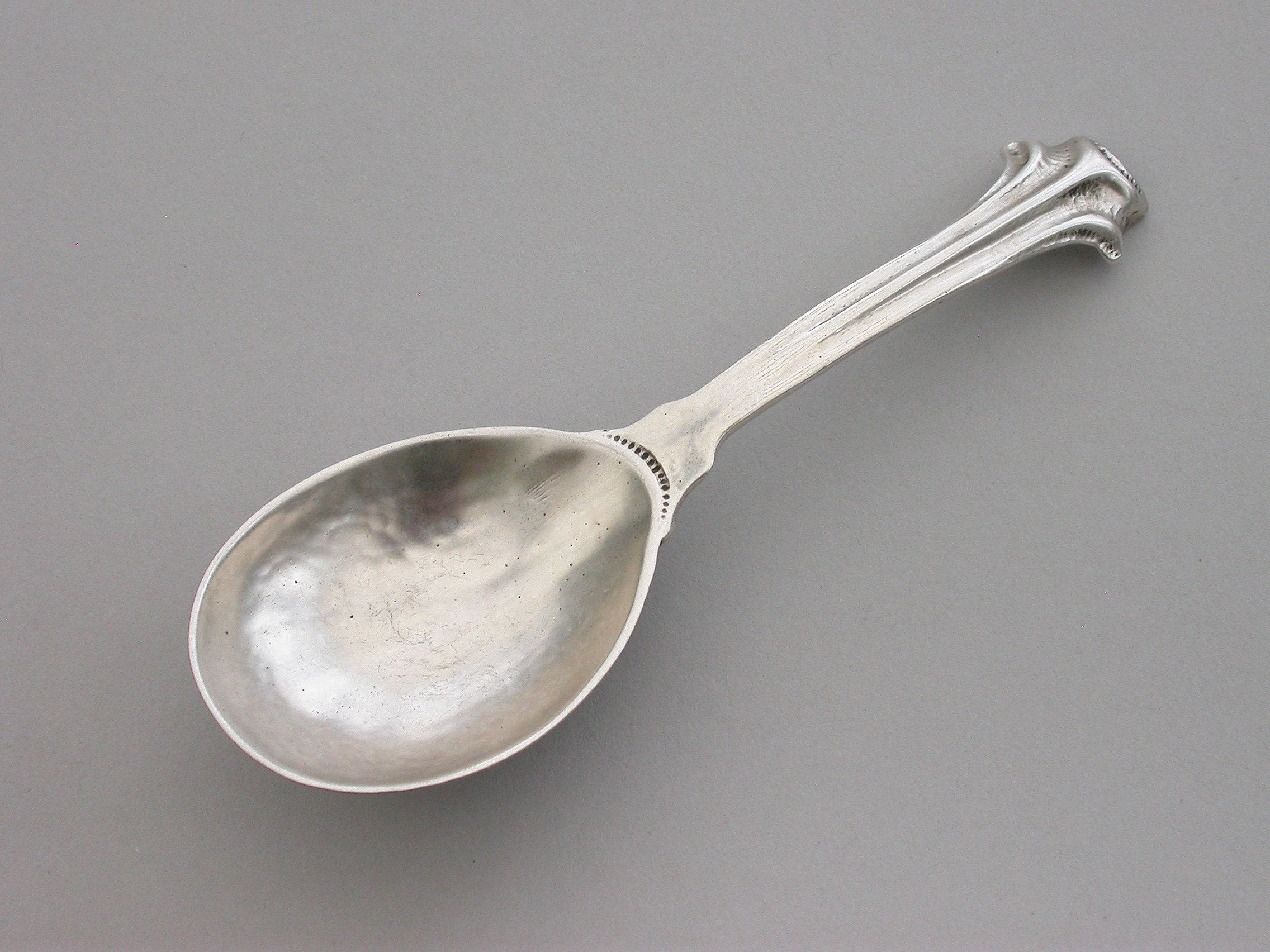
Albert Edward Jones (1879-1954) studied under Edward Taylor at the Central School of Arts & Crafts in Birmingham. By 1902 he was ready to form his own business. He designed and produced a number of hand-made Caddy Spoons in the Arts & Crafts and Art Deco styles such as this piece with a
twisted handle and ball finial, and this unusual example with a
heart-shaped bowl with wire supports.
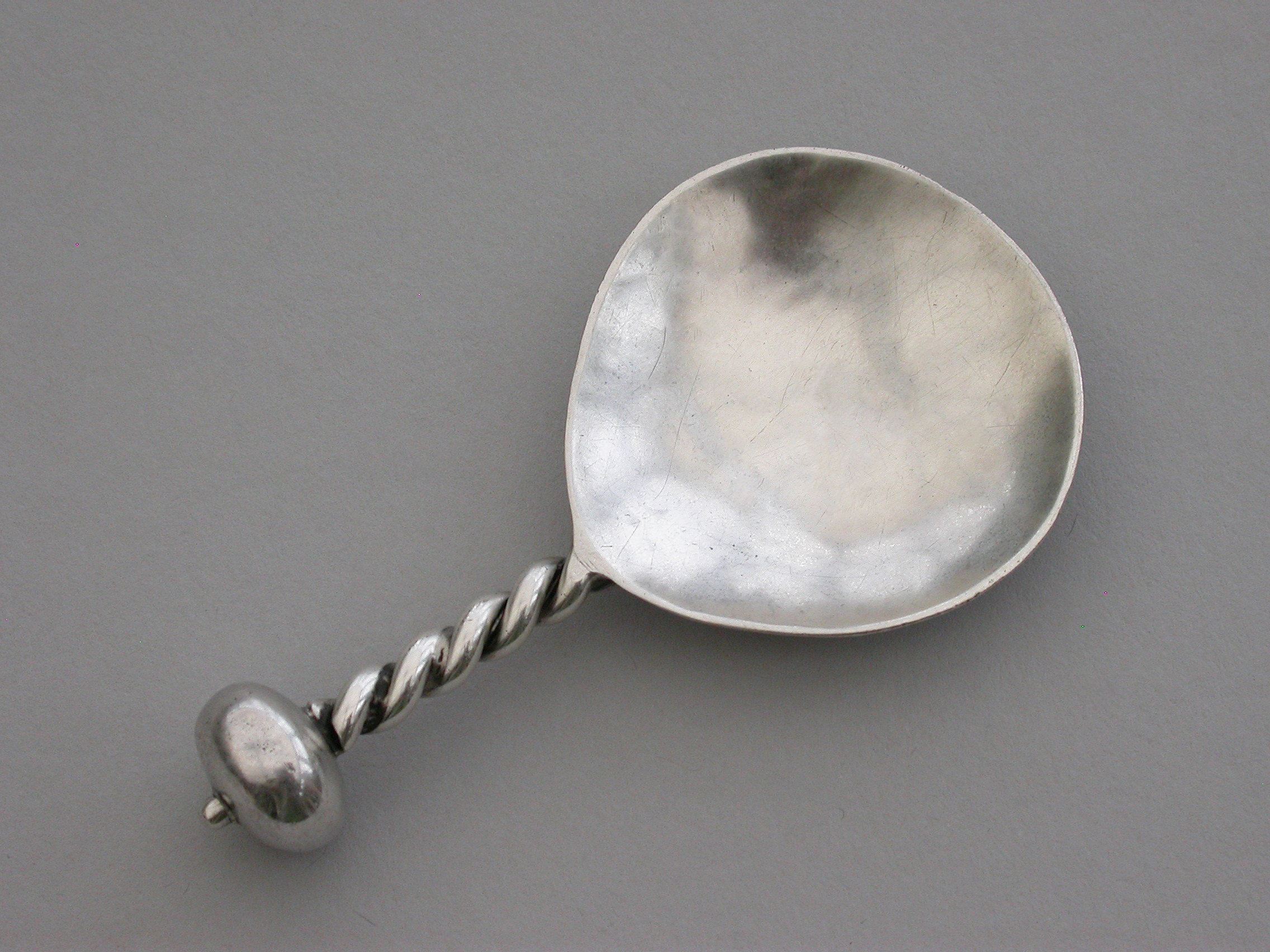

Although the influence of the Arts & Crafts movement was to continue well into the 20th century, by the early 1920's Art Deco designs started to emerge and they were to dominate the inter-war period. Deco was in many ways a reaction to the primitive 'coarseness' of hand-finished Arts & Crafts and the fluidity of Art Nouveau, but it was not afraid to borrow from both styles. Alfred
Charles (Dunstan) Pruden's large geometric Spoon of 1930 typifies the movement with just an eye cocked to the Arts and Crafts with the pierced leaves in the handle. He was later to go on to train Gerald Benney.
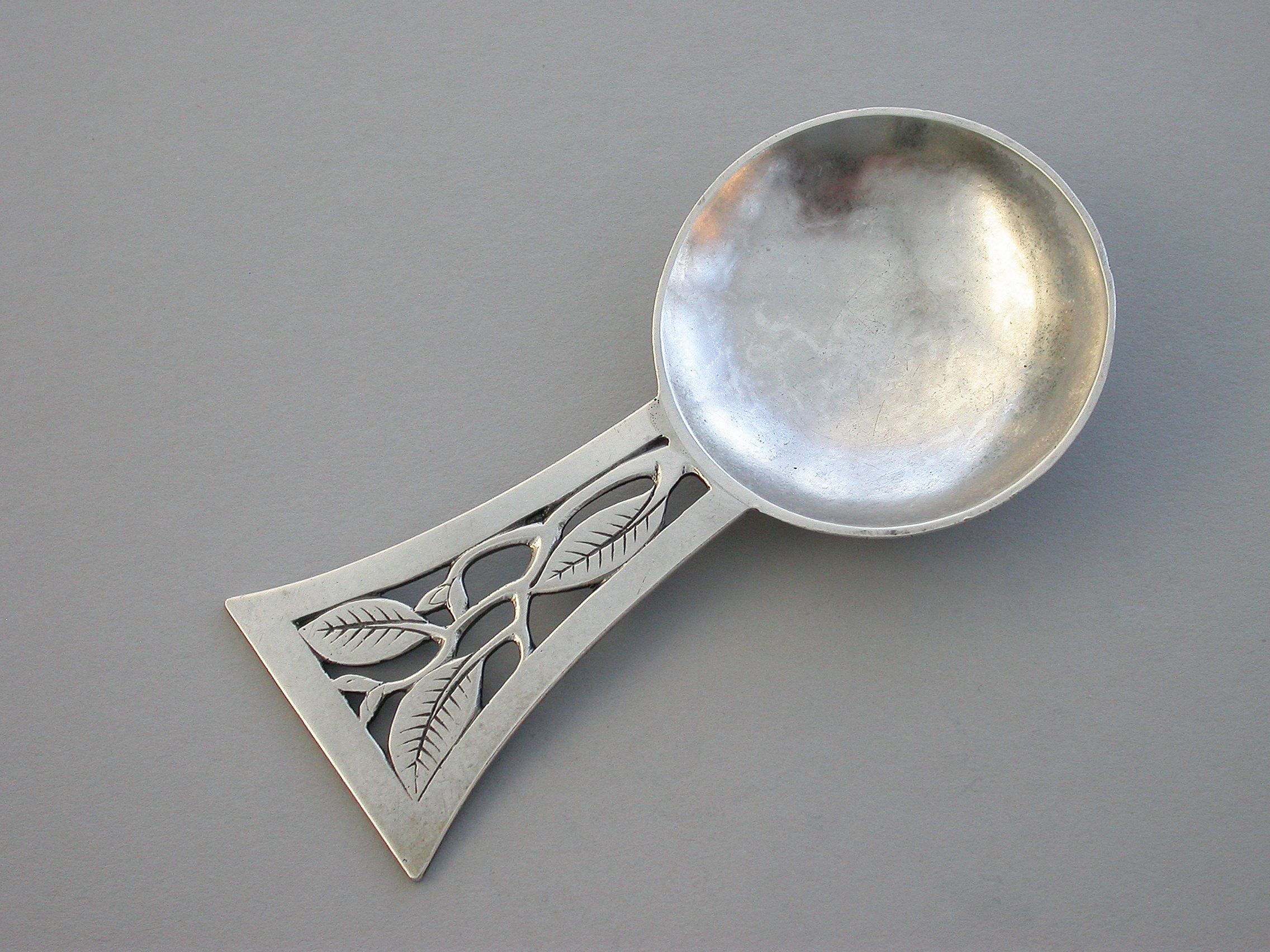
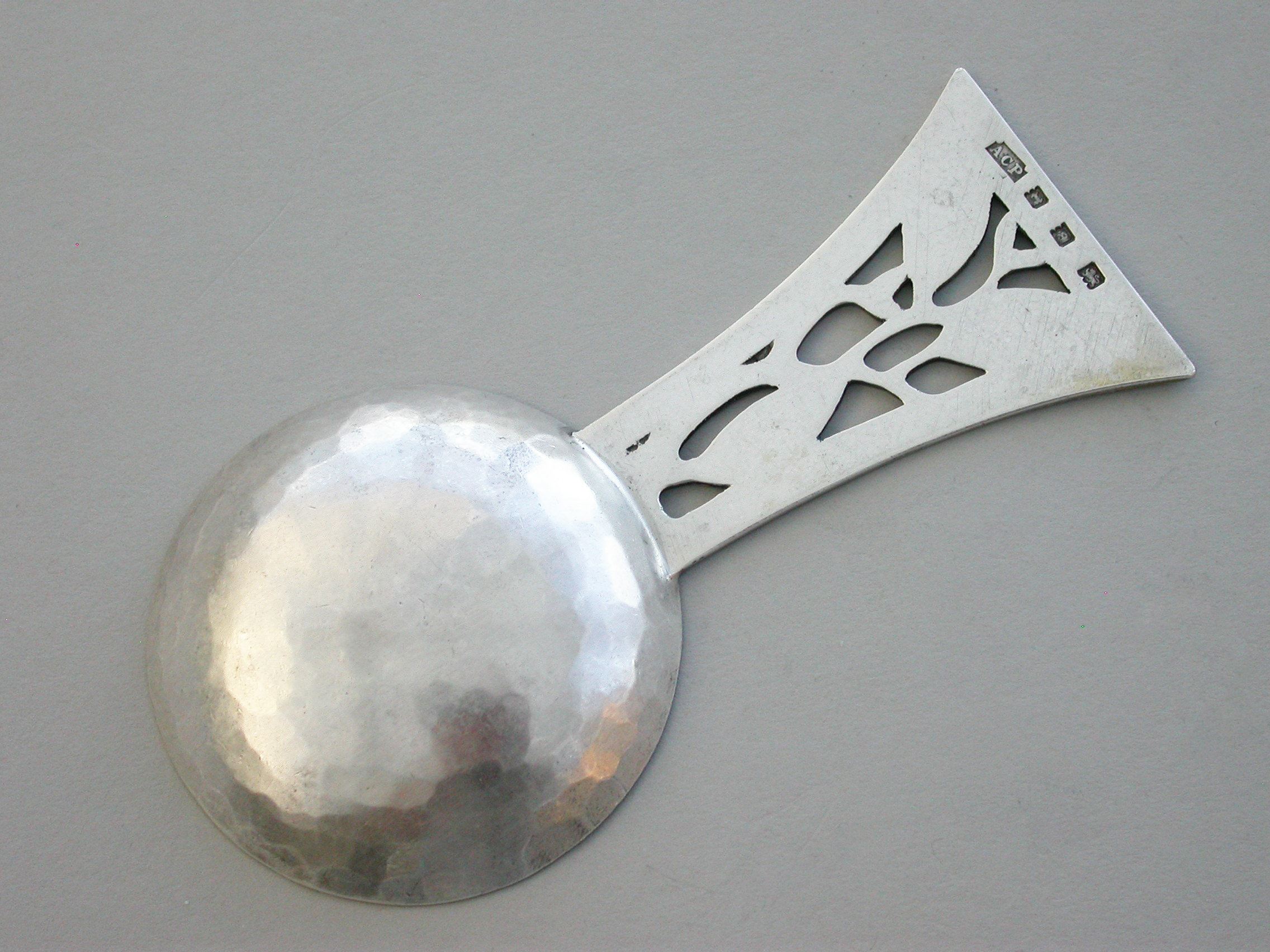
Bernard Instone (1891-1987) was a designer, jeweller and silversmith. He was only 12 when he won a scholarship to the Central School of Art in Birmingham and learned silversmithing from Arthur Gaskin. He worked for John Paul Cooper for a time before opening the Langstone Silver Works at Digbeth in 1920.He made Caddy Spoons in beaten silver and his designs are strongly inspired by nature. The pierced
'Apple Tree' and
'Leaf & Berry' Spoons are good examples.
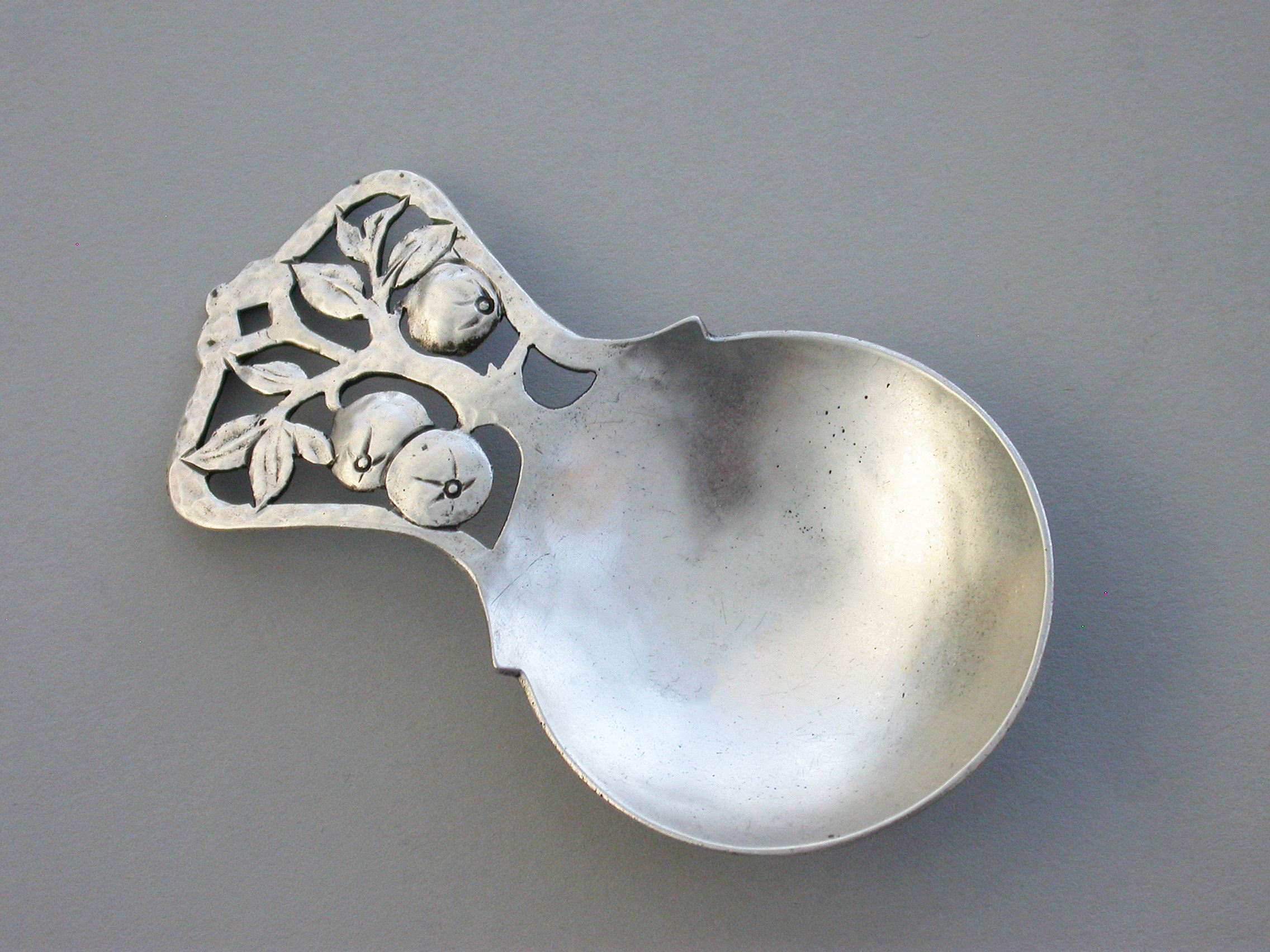

H.G.Murphy (1894-1939) was apprenticed to Henry Wilson (author of "Silverwork and Jewelry" published in 1903). He set up a workshop in London at the Sign of the Falcon in 1913 and taught at the Central School of Arts where he was the first silversmith to be appointed its Principal. He used a hallmark depicting a falcon which was never formally recognised by Goldsmiths Hall. His
"Tree of Life" Spoon is a very well made and sought after design, but this unusual variant with
pierced Daffodils is a real rarity.
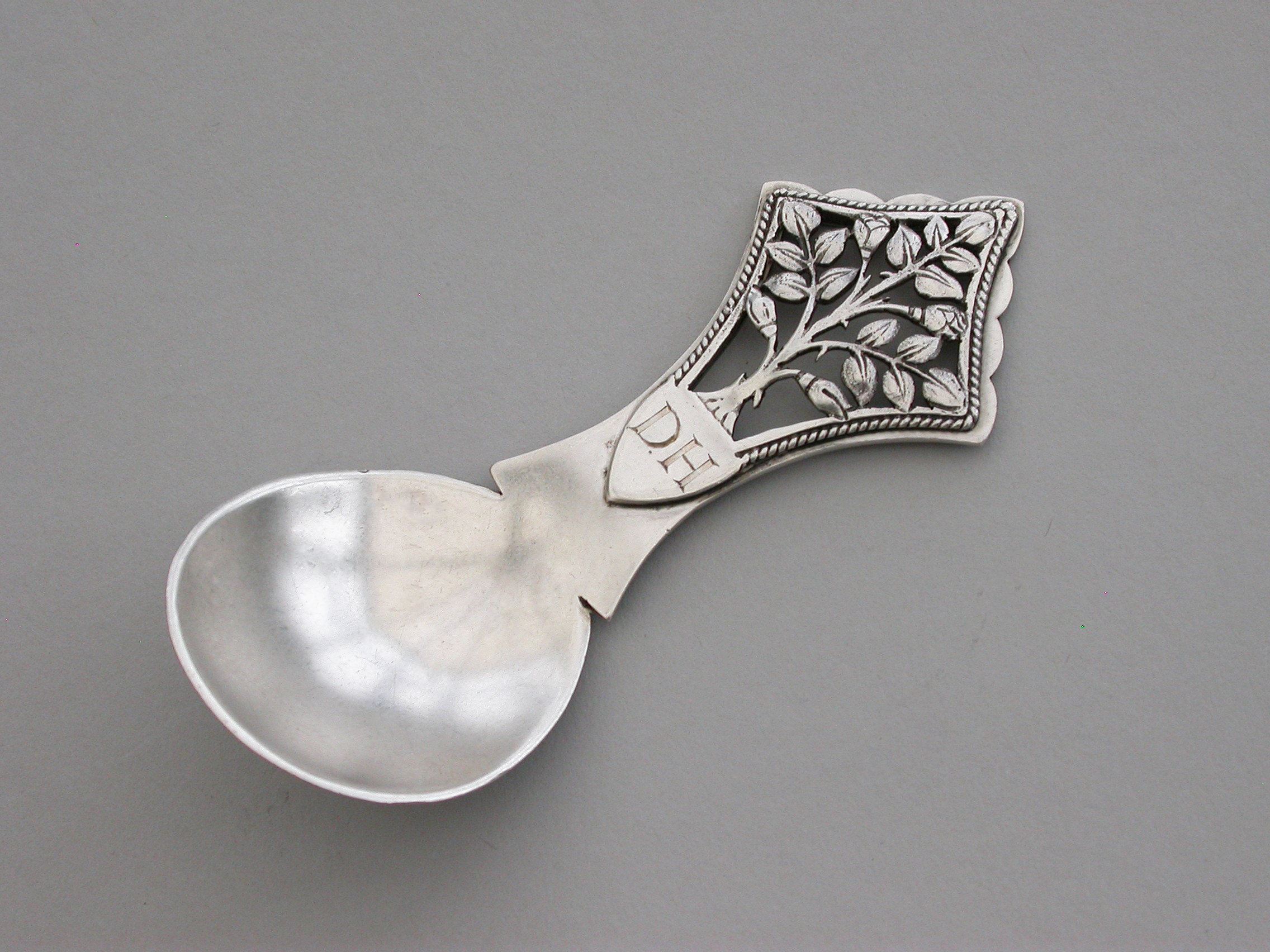

To view the whole collection of 20th Century Silver Caddy Spoons please click
here.

Featured Items
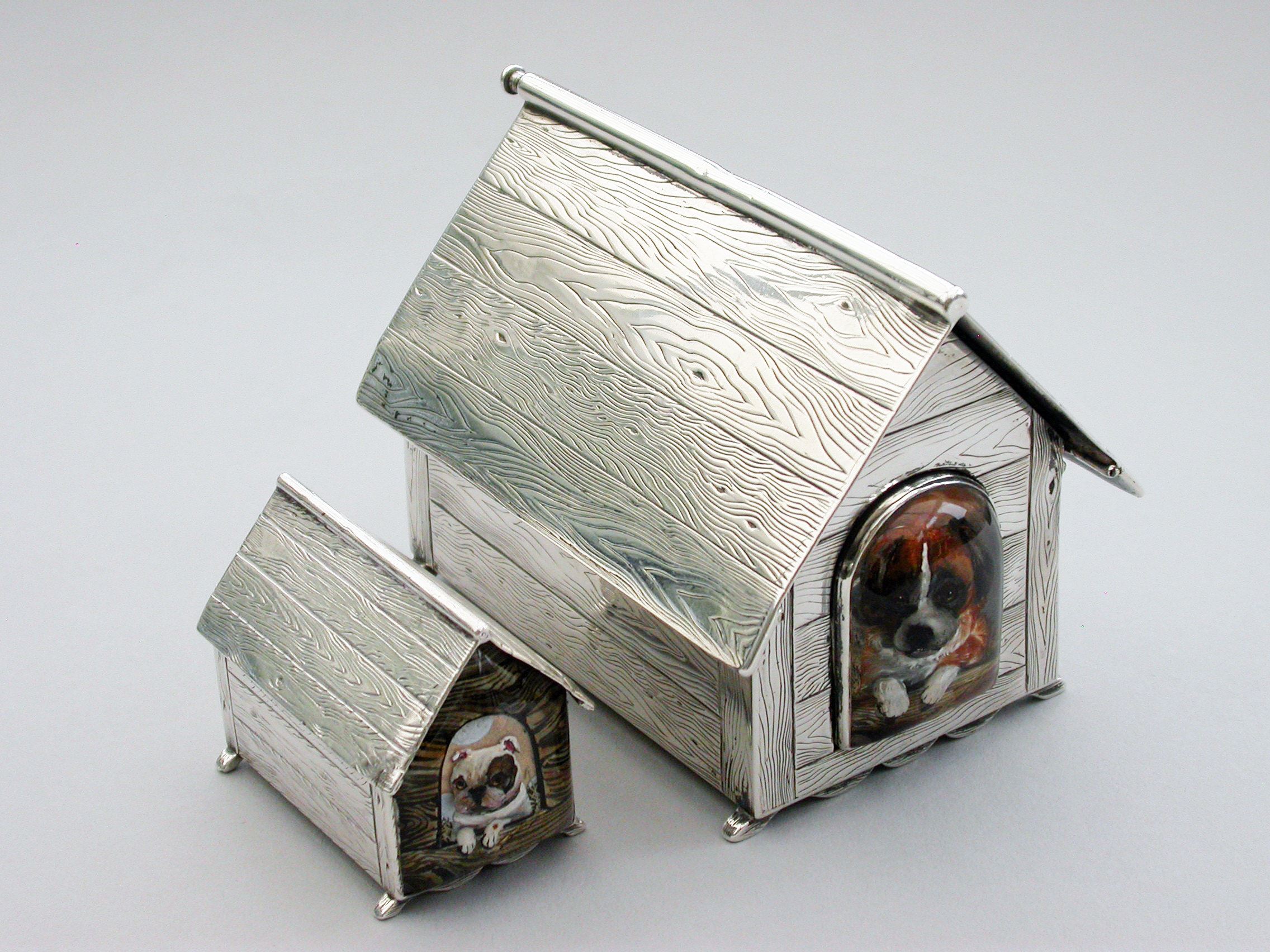
A matched pair of Victorian novelty silver and 'Essex Crystal' Dog Kennels. A
Cigarette Box and a
Vesta Case, with reverse carved intaglio's depicting a St Bernard and a Bull Dog. Realistically modeled as slatted wooden kennels with silver gilt interiors.
Both by Thomas Johnson, London 1881 & 1882.
“Essex Crystal”
One of the most unique types of Victorian era decoration must surely be the genre known as “Essex crystal”. The name does not refer to a brand, nor to geography, but to a mistaken identity!
All Essex crystal began life as a piece of clear rock crystal (not glass, but crystal). The crystal is first cut into a cabochon (flat back + rounded dome shaped top), and then working from the flat back the artisan oh-so-carefully carves a detailed design into it. Then the carved-out design is painted so that it seems to float, in three dimensions, inside the crystal when viewed from the front. This technique is what’s called a “reverse carving.”
The difference between reverse carving and intaglio is that an intaglio piece is carved into the front rather than the back of the surface. The front of a reverse carved piece remains intact. Many people do prefer to call the Essex crystal technique “reverse intaglio”, in fact.
Supposedly this art form began in Europe, possibly in Belgium. It is said that Thomas Cook first introduced the process to England during the 1860s and the finished crystals were initially sold by Hancock’s in London . So why weren’t they called “Cook crystals” or “Hancock crystals”? Well, it so happened that a very popular artist named William Essex, who specialized in enamel miniatures, was assumed to have produced them because of the fineness of the workmanship … and the wrongful attribution stuck. Essex was one of Queen Victoria’s favorite portrait artists and so it was probably just assumed that such beautiful work must be his!
Most Essex crystal designs fall into one of four categories: animals, birds, flowers, and nautical themes. Within the animal genre the most popular subjects were horses, dogs, and foxes.

